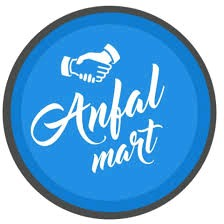Search
1/9
RM23.77
DRY IRON ORIGINAL STEAM NOn STICK LATEST HIGH QUALITY IRON
Sold by ANFAL MART 11
1(1)
6 sold
Select options
Select
Shipping
From RM4.90
Est. delivery by Apr 17 - Apr 21
Specifications
Customer reviews (1)
S**h
Item: Lalai
Kepala plag lain

3w ago

ANFAL MART 11
207 items
Shop performance
Better than 70% of other shops
Ships within 2 days
72%
Responds within 24 hours
70%
About this product
- Jenis Waranti:Waranti Pembekal
Product description
Welcome to my shop ANFAL MART 🤗
A dry iron is a common household appliance used for pressing and smoothing clothes, fabrics, and other materials by applying heat and pressure. Unlike steam irons, which have a water reservoir to produce steam for easier wrinkle removal, a dry iron operates without the use of water. It relies solely on the heat generated from its soleplate to press wrinkles out of garments and fabrics.
The dry iron typically consists of several main components: the body, the handle, the soleplate, and the temperature control. The body is usually made of durable plastic or metal, and it houses the electrical heating element that is responsible for generating the heat. The soleplate, which is the flat, heated part of the iron, is often made from materials like stainless steel, aluminum, or non-stick surfaces, depending on the model. This surface makes direct contact with the fabric and is designed to distribute heat evenly across the material, ensuring smooth and wrinkle-free results. Many modern dry irons feature non-stick coatings on the soleplate to prevent fabric from sticking or burning.
The handle is ergonomically designed to allow the user to grip the iron comfortably and guide it over the fabric. The temperature control, typically located on the front or side of the iron, allows the user to set the desired level of heat for different types of fabric. Common fabric types such as cotton, wool, or synthetic materials each require specific temperature settings, and the control helps regulate the heat accordingly. Some dry irons also feature an indicator light that signals when the iron has reached the desired temperature.
The main advantage of a dry iron is its simplicity and ease of use. It requires no water, so there is no need to refill or worry about steam settings, making it an ideal choice for people who want a straightforward, hassle-free ironing experience. It is particularly well-suited for fabrics that do not require steam treatment, such as delicate materials that may be damaged by moisture or thicker fabrics that respond well to dry heat.
Dry irons are also typically more lightweight than steam irons, making them easy to handle, especially for quick touch-ups or for those who prefer a lighter appliance. The compact design and ease of storage make them perfect for smaller living spaces, such as dorm rooms or apartments, where space is limited.
While dry irons are effective for smoothing out wrinkles in clothing, they may not perform as efficiently on heavily wrinkled fabrics compared to steam irons. The absence of steam means that stubborn creases or wrinkles may require more effort or multiple passes with the iron. However, for daily use and general garment care, a dry iron remains a popular and reliable choice.
In terms of safety, most dry irons come equipped with built-in safety features such as automatic shut-off mechanisms, which prevent overheating and potential fire hazards. These features typically activate if the iron is left on for an extended period or if it is accidentally tipped over. Additionally, many models have a heat-resistant cord to prevent damage or safety concerns during use.
In summary, a dry iron is a practical and efficient appliance for pressing and smoothing clothes. It offers simplicity, ease of use, and a lightweight design, making it an excellent option for individuals who need a straightforward solution for ironing without the complexities of steam features. Whether for everyday garment care, travel, or occasional touch-ups, a dry iron is a versatile and essential tool in many















households.
Explore more from ANFAL MART 11

4.8
4799sold
RM59.00
RM139.00


4.7
14747sold
RM79.90
RM119.00

4.7
3435sold
RM59.00
RM199.00

4.7
4120sold
RM199.00
RM439.00




4.9
4915sold
RM58.00
RM189.00


No more products
Open TikTok






























